
If you build it, they will come.
About 620 kms away from Chennai in the Tirunelveli district of Tamil Nadu, is situated a small town of around 70K inhabitants – Tenkasi. Tenkasi, which means ‘Kasi of the South’ is located in the foothills of the Western Ghats, and is dotted by many magical waterfalls, beautifully carved temples, and lush green rice fields. No matter where you go, you cannot escape the sea of greenery, intermittently marked by towering palm trees.
In the midst of these beatific green fields, there once lay an abandoned, nondescript fruit pulp manufacturing building. One would still mistake it to be an insignificant structure while passing through this small town but for the small billboard on the gate which reads – Zoho.
But what brewed out of this Tenkasi centre last week is something that will put it right up there on the world map – Zoho’s sixth product – Zoho Desk – the industry’s first context–rich help desk software built right out of rural India. Or as Sridhar Vembu, founder and CEO of Zoho speaks of it – “Made in rural India, Made for the world.”
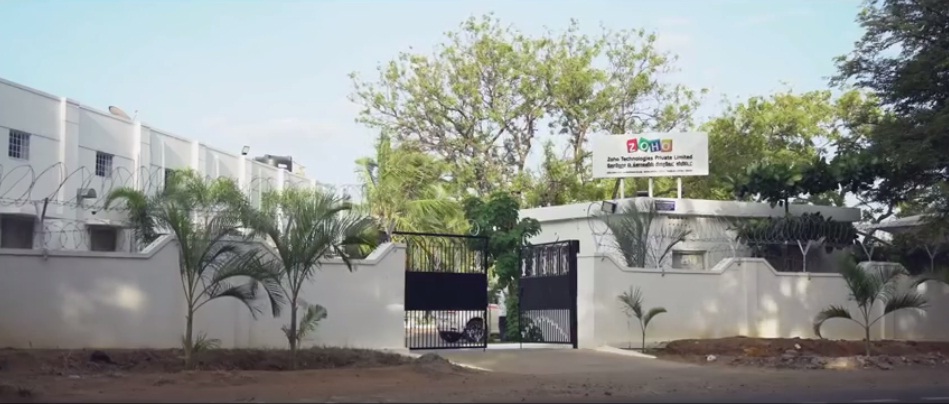
Built by a team of 150 people, Zoho Desk uses customer data from past interactions and from other Zoho products like CRM and Projects, prioritises tickets, and intelligently presents information to customer response agents, thus empowering them to better understand a customer’s problem, and resolve it efficiently. It allows for context-aware collaborations where users can mention their colleagues from other departments in a social-network-style feed within tickets to provide them the complete context of the issue raised and collaborate with them to resolve it quickly.
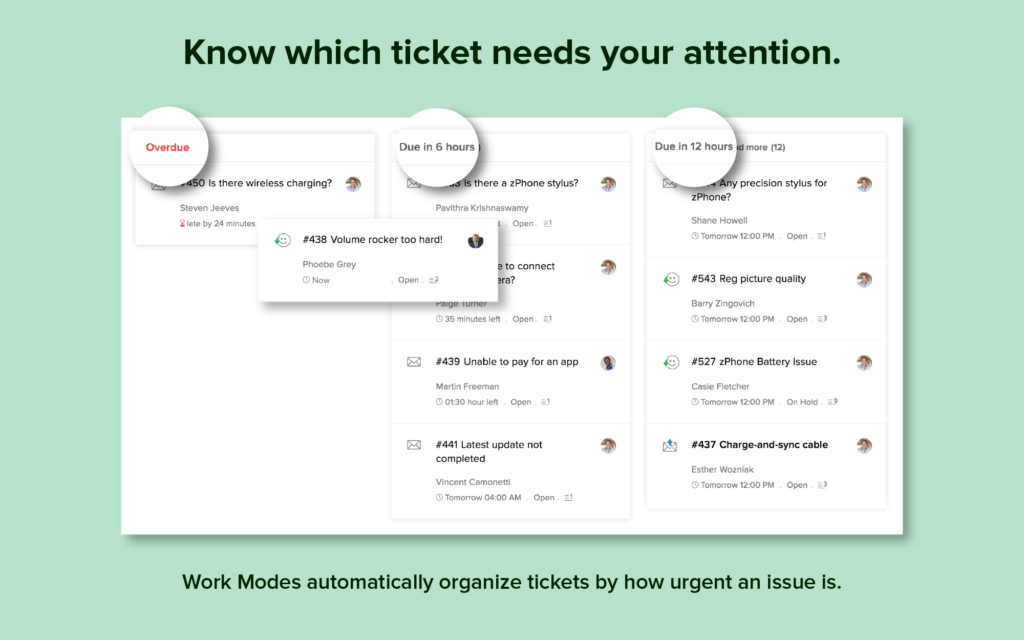
The user interface also packs in innovations like Work Modes that help agents send context-aware responses, the Headquarters dashboard that provides the visibility managers need to make better decisions, the Agent Scorecard dashboard that shows each agent their own average response and resolution time, number of open and closed tickets, and the Team Feed to help the entire company participate in customer service.
But what adds to the uniqueness of this product, besides its context richness, is the fact that, with it, Zoho has challenged conventional wisdom yet again. The company which trod on the path of building software products from India when IT services were all the rage, has now debunked yet another paradigm – location.
Explains Sridhar, “In an industry where companies have come to believe that the only location that matters in the cloud is a few square miles of downtown San Francisco, we are proving that a determined and sincere group of people can build path-breaking products anywhere.”
Or as he cheekily added, building software in the downtown from nowhere! Because he believes, “if you build it, they will come.”
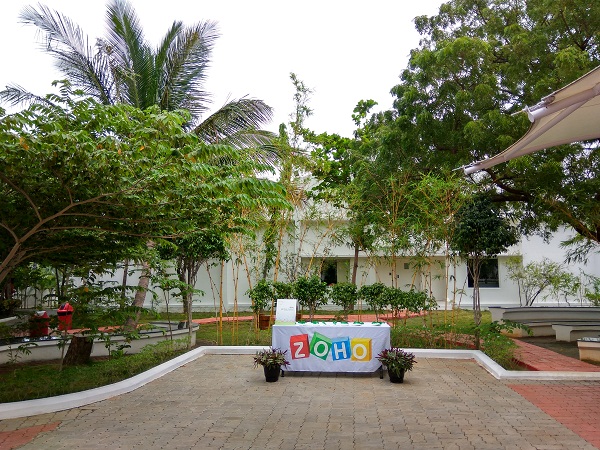
“It Is Better To Be In The Product Business If You Can Add Value”
Zoho’s journey started two decades ago but from the very beginning, Sridhar knew he wanted to build products. He recounts the days when he was working with Qualcomm in the US in 1996.
Whenever I would go to the store and look up at products, be it in Walmart or Sears, I would see made in Taiwan, made in China, made in Japan, made in Korea, but I would never see made in India. So as an engineer, I was always fascinated as to how do we make those things? Why don’t we make those things here? That was the motivation, because that is what a product business is – making things.
But this conviction to make products from India was the first time Sridhar challenged the tide. Because, back in 1996, the services companies were all the rage – that was the ‘in’ thing to do. Numbers, however, spoke otherwise. Says Sridhar, “The largest software companies tend to be product companies – not only by revenue but also by profit margins. So I figured out early on, that it is better to be in the product business if you can add value. But it is also harder. And that’s why it was slow going at first because it’s harder. Also, no one had ever done it before, so we had to do it from ground up, and that takes time. But once you stick with it, and go through it for five-six years, it gets better and better.”
The inspiration to persist and be in it for the long haul also came from companies that were toeing the same path. For Sridhar, that company was Honda, which started from very humble beginnings – from making bicycles to motorcycles to all the way to building luxury cars. He spent a lot of time studying Japan, Germany, and the Silicon Valley startups to understand as to what do they do right, how do they do it, how do they create new markets? How do Japanese firms get into a market in which they have no expertise and over time become global?
For him, these businesses were his business books.

And what did he learn from studying them?
“You start to realise that the one key thing in every of these success stories is that there is rarely anything that was done overnight. You have to have the long haul; you have to spend 10-20 years at it. And then if you stuck to it, and you learn it well, it gets better. Generally, the completion tends to drop out as they are impatient for results. You have to basically have the ability to stay the duration – that’s the key. You add on then by building up the skill and the expertise.”
It is this focus on the long haul that became Zoho’s primary building block as it underwent many transformations in its evolutionary journey to finally become the ‘operating system for businesses’ as it’s known today.
Starting out with narrowly focused telecom products in the beginning to delving into enterprise IT post the dotcom bust in 2000 in search of broader markets, to finally launching a cloud platform in 2005, Zoho was quick to leverage the cloud transformation, that began 11 years ago. That’s how the Zoho suite was born – a single comprehensive cloud platform with all the necessary applications to run a business entirely from the cloud – be it CRM, Office, Mail, Finance, HR, IT & Helpdesk, or others.
Says Sridhar, “When we started, the cloud industry was still very young but we realised that’s where the future is. We jumped into it and it has helped us in building a brand much more global in scale. But we still have a lot more to do. We are leveraging the cloud advantage to expand.”
Interestingly, all that started from Chennai – which way back in 1995 was hardly the SaaS hub we know it to be today, courtesy Zoho.
“A Tree That Has Been Standing For A Long time Spreads Its Seeds Everywhere”
But why build a SaaS hub in Chennai?
In 1995 Sridhar debated that question whether Zoho should be in Bengaluru or Chennai. Bengaluru was already cooler in many respects, but he decided to stay back in Chennai.
Reason being, “Chennai was home. It wasn’t any scientific decision,” he laughs.
But there was hardly any home run advantage to the move. The startup had to face challenges finding people with skills or training people in the skills they needed. Sridhar, however, dismisses them as challenges any company would face in any developing country.
He says, “You don’t have predecessor companies to draw on, or a ready-made talent pool that you can access. So you have to build that from the ground up. But this is the challenge which companies like Honda have tackled before. Hence, I knew that it’s possible to do it but you need to have the long term orientation.”
And that long-term orientation is what has been validated 20 years down the line with Chennai becoming the SaaS hub of India. “The expertise and talent pool that we have built is putting Chennai on the global SaaS map,” he says.
And he is 100% spot on with that assessment as Zoho alumni like Girish Mathrubootham and Arvind Parthiban moved on to found SaaS firms like Freshdesk and Zarget, which have put the world’s focus on Chennai and SaaS. Sridhar knew this was bound to happen one day.
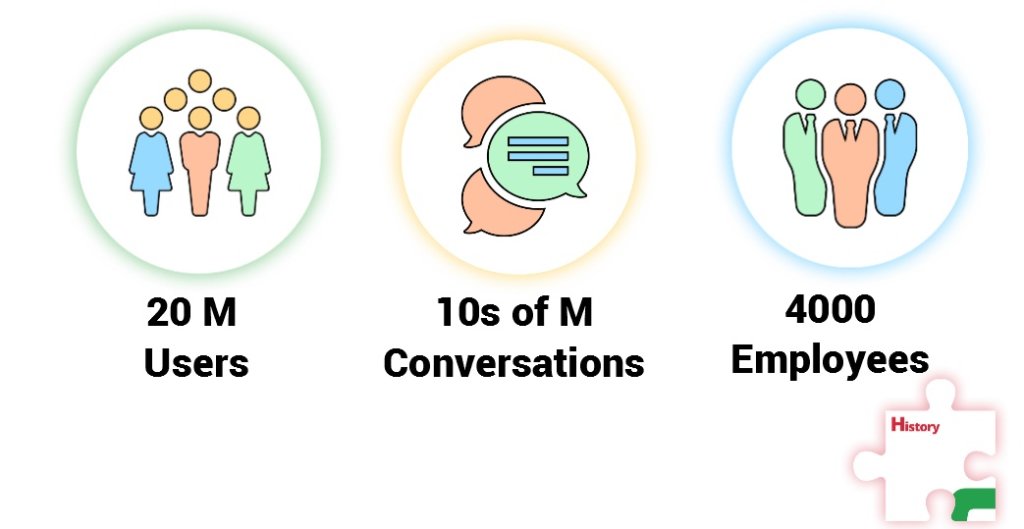
He says, “I always predicted it. A tree that’s standing for a long time in the forest spreads its seeds everywhere. It is inevitable, an established understanding, that if you are going to be successful, you will give rise to many other new successful companies. That’s part of our contribution to the broader society and the nation.”
Of course, what has helped spawn this rank of second generation firms is Zoho’s culture of having a lot of highly decentralised empowered teams. Sridhar explains that Zoho is not a monolithic company that’s run in the command and control way. A lot of people have substantial autonomy in how they run their teams and that becomes a good ground for learning and a good training ground for leadership.
He has never believed in formalised training. “A lot of people in Zoho have the real world training of building a product and launching it. That’s what is causing the ecosystem effect. Zoho has become a training ground for talent and leadership.”
He adds that one needs to get out of this mindset of everything centralised in Delhi or in Chennai. “We have to decentralise power, people have to have more local decision making. That’s how I run Zoho. That helps keep the culture vibrant, people happy, and also helps create a talent pool for future companies.”
But what’s surprising is the fact that despite being one of the early nurturers of the ecosystem, Zoho has always kept a low profile and it is only now that it has started becoming vocal about its products. While it may have something to do with the sudden renewed investor focus on firms founded by Zoho alumni and their rising popularity, but, for Sridhar, it has just been a question of the right timing.
He explains, “It was not like that we didn’t want to tell the story; the products have to be ready and the market has to be ready. The products have to be mature, there’s no point in taking some immature technology and IPing it out. Then you fall flat and people get disappointed. Now that stage has been reached where the product is ready, technology is much more mature and usable, a lot of people are using it, and the market is more ready to embrace cloud globally, that’s why we are speaking about our products now.”
Of course, what’s added to the noise is the fact that VCs have started taking note of the market and are pouring into this space. But Sridhar remains steadfast in his stand on staying away from them. While, in the beginning it was simply a matter of chance – 20 years ago it was not easy to get VC money. But once Zoho was in business for about five years, it didn’t need it any more.
He adds, “We already started making money and could fund ourselves. Then it became our conviction that we like this freedom, so why change it? For instance, this experiment in Tenkasi, we would not have done it if we had a very short time horizon. This freedom is possible only when you don’t have that gun of IRR on your head. Because the longer it takes to produce a return, the lower the return is from a VC perspective. Since we don’t want that to impact our thinking, that’s why we didn’t go down that path.”
Made In Tenkasi, Made For The World
To best understand the location of how the Tenkasi centre is right in the heart of rural India, one look at the Google map image would put things in perspective.
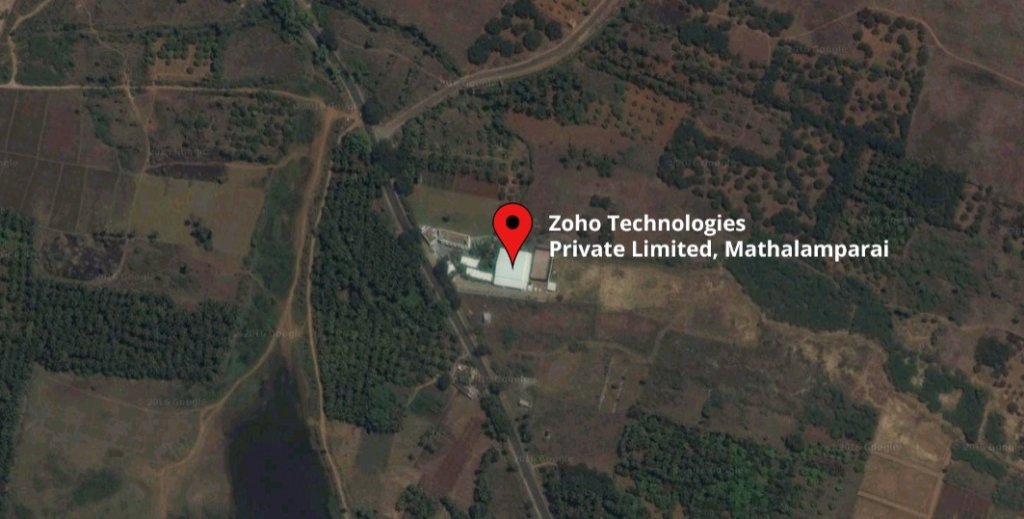
As one can fathom, besides conventional objections such as it will take too long to build the product, one has to assemble talent to move there, Tenkasi was a classic case of all the first mover problems one could think of. Who would want to come here when there’s isn’t any other company? What about facilities such as schools and hospitals?
For Sridhar, the answer is simple - sustainable development.
For Sridhar, the answer is simple – sustainable development.
He asks, “You take Mumbai, Delhi, Chennai, or Bengaluru – they are gigantic. Chennai is smaller but still growing too fast for my taste. When I was a kid, Bengaluru was a town of 2 Mn, now it’s 10 Mn plus. Where does it end? How far can you go? Can you go to 50 Mn or 100 Mn? God forbid! But the present path that we are on to development, that’s what we are actually doing to ourselves. We are sucking the talent from all the smaller towns everywhere and they migrate to the big cities for jobs. We have no way to stop them and it’s a personal choice but it’s not a sustainable model.”
The migration of workers to metros too comes with its own set of problems – it is an expensive affair and burdens the already stretched cities. There is crime, there’s pollution, there’s water scarcity, there’s garbage – any problem you name it, it’s there. And Sridhar rightly questions why do we have to do this?
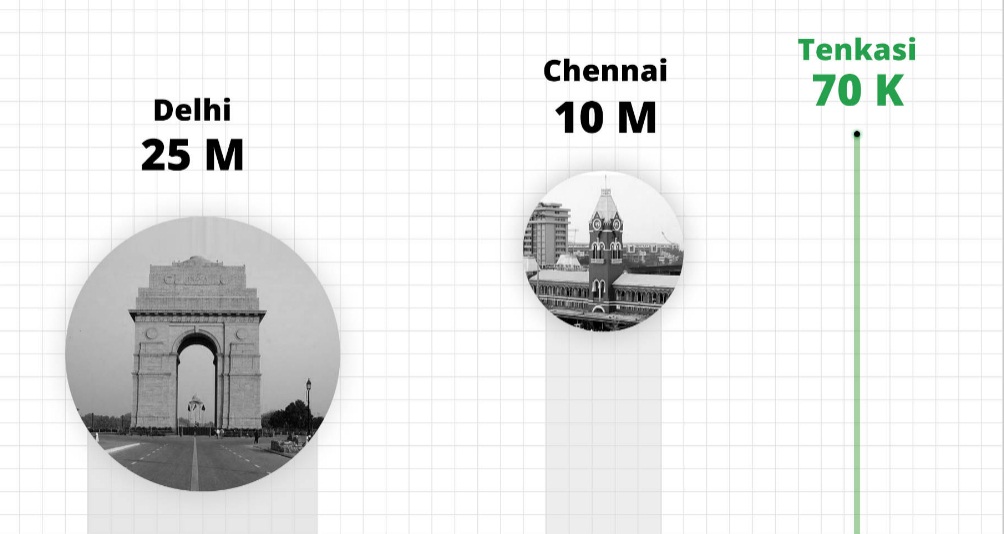
He adds, “What is the meaning of cloud – that information is everywhere and knowledge is everywhere, so why cannot we reverse this trend? Why can’t we start things in smaller towns and keep the local talent there? I noticed that 80%-90% of the talent we recruited in Zoho were from outside of Chennai. So we are also partly causing those urban problems by bringing people here by creating jobs here. I thought why don’t we create jobs somewhere else and keep people there? It’s better for them, better for Chennai and better for India?”
And hence, the Tenkasi experiment.With its idyllic surroundings, a population of about 70K and less than 100K, and basic infrastructure with schools and hospitals provided for, it just proved the right setting for Sridhar to build software products from the heart of the real rural India.
The fruit pulp factory proved just the right location – and thus saved the team cutting into any agricultural land. Of course, getting the talent pool and creating the infrastructure were the initial challenges.
But Sridhar calmly affirms, “You dance with the girl who wants to dance with you.”
From a centre of three employees, it grew to 150 in the last five years. And given the fact that plans are on to triple the existing capacity, looks like many are ready to dance with Zoho as it builds software from smaller towns like Tenkasi-in stark contrast to its rivals.
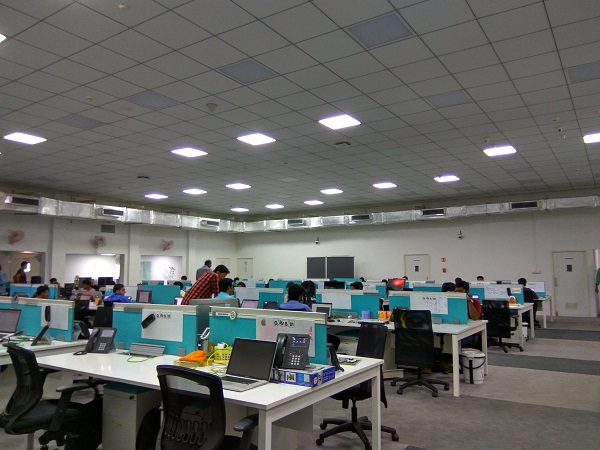
So can we expect Zoho to roll out more of these centres in Tamil Nadu itself?
Right now this is the only one. Our goal is that as more people realise this model, more companies will do it. Obviously, we don’t want them coming to this little town, but there are 10K such towns in India. So why not go to Maharashtra, to Karnataka, to UP rather than crowd in Delhi or Mumbai? People should realise that it can be done.
Zoho hopes that by exporting this product to the 150K customer organisations, it can make other companies think seriously about those 10K other towns.
If You Are Not In It For The Long Haul, You Should Not Be Doing It
Sridhar believes that for Indian SaaS companies, there is obviously substantial growth ahead as these companies aren’t very big on a global scale.
“We are talking about billions of dollars v/s millions of dollars. So we have a lot of growth ahead. Even the ecosystem in Chennai is still very young, it’s not very mature. But India has to branch off; this growth has to be taken to the smaller towns – which is my personal passion. Imagine this ecosystem succeeding and creating 200K-300K jobs, do you want to put all those jobs in Chennai? Makes no sense, it’s painful to even think about that thought. We want to spread these jobs out. And on a broader level, all of this means that we have to make more technology products in India.”
He adds that India runs a massive trade deficit – almost 6% of GDP. The bridge is through remittances from the Middle East to Europe and US for work. He questions how long can India be doing that? “Will we forever be exporting labour to other countries and not building things here? It has to be rethought. Then there are geopolitical issues, immigration issues which means we need to learn to make more things here and hopefully do it in smaller towns and not just in major metros,” he adds.
Once you get a billion smartphone users, you are going to get 200 Mn SaaS users easily.
Additionally, besides being a creator of such products, India also looks poised to become the largest market for SaaS products. According to Nuclues42, in India, about $565.46 Mn in funding has been invested in SaaS startups across 143 deals during January 2014 to October 2016. He explains, “Once you get a billion smartphone users, you are going to get 200 Mn SaaS users easily. Global trade as a percentage of global GDP has been dropping post the financial crisis of 2008. And with all the trade friction, realistically I don’t expect growth in global trade globally. Regardless of your political persuasion, you have to accept the reality that there is a lot of resistance to too many imports in lots of countries. This means we don’t have to focus much on exports but rather make things for the Indian market.”
As far as Zoho is concerned, India is now its number two market in terms of traffic but only fifth in terms of revenue. However, in the next five years, it is expected to become the number two market. Although the US still remains its largest market, in the next 10-15 years, he imagines India easily becoming the largest market. Meanwhile, as compared to its global competitors, he believes that Zoho stands strong on its value proposition of providing an integrated suite ready at an attractive price.
But what has helped Zoho score against rivals like Salesforce is the fact that it solves a particular pain point of CRM-complication and expense. He explains, “Like any new company, we faced the challenge of how does anyone know about us and even if they know, why should they trust us? It’s never a good business plan to go and say trust me. You have to solve some pain there so that they are willing to take a chance on you. That is how you get into the market. It’s always a camel and tent story with any new venture – you got to sneak your nose in and slowly take over the tent. That’s how business works.”
Thus smaller businesses which did not want that level of complexity and that level of expense readily took to Zoho’s cloud CRM solutions. Now, of course Zoho has solved much more than CRM. And with Zoho Desk, it looks geared up to give a big fight to customer support players like Freshdesk and Zendesk.
Sridhar firmly believes that business is a 10-15 year long haul game, and one should only be in it if one’s up for the long haul. For startups who are dazzled by the short-term glamour of funding, his advice is simple – funding is a milestone but by itself it is not a big deal. He, however, believes that this fixation with funding will fix itself as people get more experienced.
“One of the disadvantages of youth is that you don’t have that perspective. If you are 22, you don’t have experience on your side. You haven’t had 10 years of experience in anything, you have not watched a 10-year cycle. Four years later, the funding environment may be difficult but you don’t know that now. But if you are 35, you have seen funding environments that are both good and bad. So you are more likely to take that into account.”
What has also kept him going through all the good and bad environment is his Buddhist take on suffering and joy.
He concludes, “There are lot of things you don’t control. So don’t worry about them, go to bed and sleep well. Worrying is mental suffering and if you don’t suffer, you can be in it for the long haul. If you are enjoying it as opposed to suffering, you can keep going. People burnout because they are suffering something all the time. They don’t enjoy the work anymore. I try not to suffer and try not to inflict suffering.”
One last look at the Tenkasi centre comfortably nestled in a sea of green and it is not difficult to understand how building software can alleviate suffering!









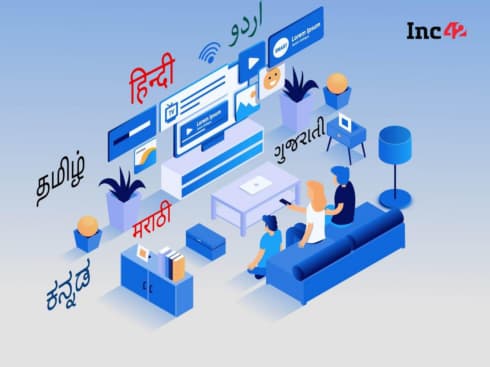

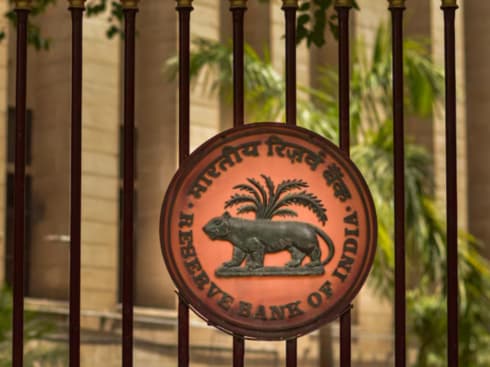




















 Ad-lite browsing experience
Ad-lite browsing experience